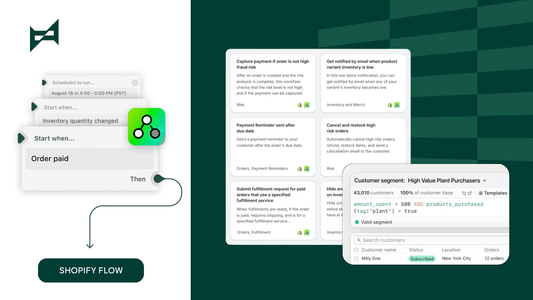E-commerce Trends 2023 - Opportunities & Challenges
In 2023, e-commerce is set to experience robust growth to meet the increasing demand for online shopping and diverse online shopping experiences. With an estimated 265 million consumers engaging in online shopping this year, the sector has witnessed a 77% surge compared to the same period last year, catalyzing rapid innovation and digital commerce adoption over the past decade.
As brands grapple with challenges in 2023, they will need to respond by enhancing flexibility in their products, plans, and policies. So, what are the e-commerce trends, opportunities, and challenges for businesses?
E-commerce Trends & Opportunities in 2023
Online Shopping, Work, and Socializing Becomes Mainstream
After years of restrictions due to the pandemic, people now seek connectivity in every aspect of life, including commerce. Here are some e-commerce trends expected in 2023.
Enhanced Online Shopping Experience
E-commerce platforms will focus on improving customer shopping experiences by incorporating new technologies like AR/VR and AI. According to Statista, by 2022, the retail segment will constitute 5% of the AR and MR software market, with AR alone generating $80 billion in retail revenue.
In the online retail and e-commerce sector, approximately 75% of customers prefer brands providing platforms with AR experiences. About 61% of shoppers prefer retailers with AR-supported experiences compared to those without.
Boosting Direct Sales on Social Media (Social Commerce)
Direct sales on social media platforms will become a prevalent trend, allowing businesses to swiftly and efficiently reach potential customers. The value of global shopping transactions through social commerce platforms is projected to reach $1.2 trillion by 2025, nearly tripling from the current $492 billion.
The growth of social commerce is primarily driven by Generation Z (born 1997–2012) and Millennials (born 1981–1996). The top products expected to be purchased globally through social media platforms include clothing (18% of total social commerce value in 2025), followed by consumer electronics (13%), fresh food and fast food (13%), and home decor (7%).
Local & Global Market Expansion
Businesses will concentrate on expanding both local and global markets by improving transportation and warehouse management for reliable and fast delivery.
The development of new payment methods: The demand for convenient and secure payment methods will rise. Hence, businesses will focus on developing new payment forms such as cryptocurrency and blockchain.
Learn more: D2C model and trends in 2023 you should know
Challenges of E-commerce in 2023
Information Security & Online Transactions
The security of customer information and online transactions remains a significant challenge for e-commerce. Businesses must ensure customer information is secure and safe.
In Vietnam, with the significant growth in internet users, especially in online shopping, there is a surge in network attacks. The Vietnam Computer Emergency Response Team has recorded and dealt with nearly 10,000 website attack incidents, with almost 50% coming from the distribution of malware through security vulnerabilities.
Fierce Competition
E-commerce is becoming increasingly competitive, requiring businesses to find ways to survive in this challenging market. Investments in new technologies to improve customer experiences and differentiate from competitors are essential. Social commerce levels the playing field, promoting fairness through innovation, creativity, and the power of individuals. It empowers small brands and individuals, compelling large brands to evaluate their relevance in a market with millions of individuals.
Transportation & Delivery
Transportation and delivery are always a concern for any business. Brands need to ensure fast and accurate delivery times for customers to trust and continue purchasing on their platforms. Delivery speed is a critical factor influencing satisfaction and customer retention in the fiercely competitive online market, where online stores offering quality products and fast delivery gain a competitive advantage. According to logistics companies, the demand for specific types of goods or imports, especially cross-border express delivery, is increasing. New consumer trends and the e-commerce boom demand adjustments in the models and business strategies of delivery, shipping, and logistics companies.
Developing New Markets
Businesses need to find ways to develop new markets to expand their customer networks. This requires businesses to understand the needs of new markets and have an efficient plan to approach them. However, an Accenture survey also shows that up to 50% of social media users express concerns that goods purchased through social media will not be warranted or have appropriate return policies. This indicates that a lack of trust is a significant barrier to the growth prospects of social commerce. Sellers who can address this issue will have a better chance of increasing revenue and market share.





Comments
1 commentBe sure to use the latest version available and follow the instructions provided by the software developer. please keep in mind that the steps might differ for different versions or updates. For the most accurate instructions, a new latest version download link is given below.
LicenseCrawler Crack
App Builder Crack
Reimage Pc Repair Crack
DaVinci Resolve Studio Crack
Ableton Live Suite Crack’s
Lightburn Crack